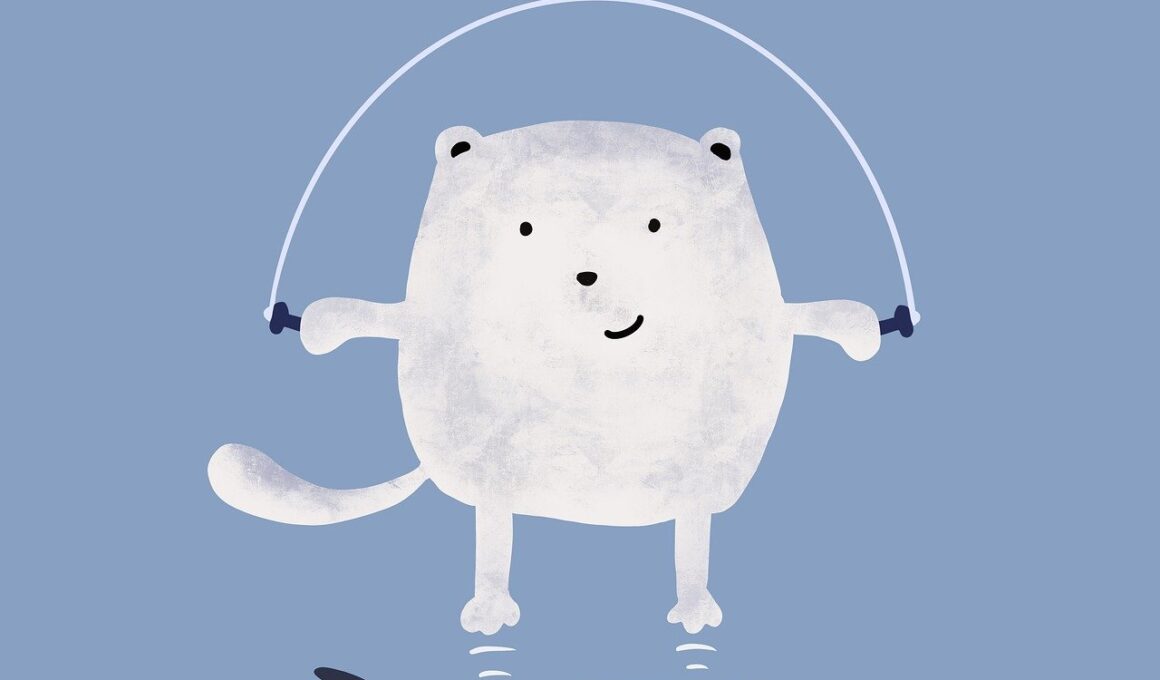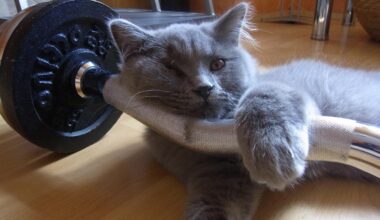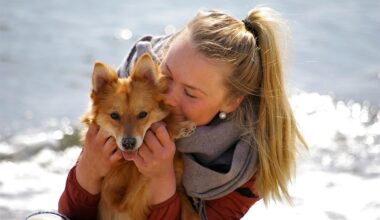Health Benefits of Tailored Exercise for Senior Cats
As cats age, their exercise needs change significantly. Providing age-appropriate activities ensures that senior cats remain physically and mentally stimulated. Regular exercise can help maintain ideal body weight, which is critical for this demographic, reducing the risk of obesity-related health issues. Furthermore, it promotes better mobility and flexibility, important aspects for maintaining independence in daily activities. Engaging in physical activity also enhances cardiovascular health, which is especially vital since senior cats are at a higher risk for heart disease. Daily exercise can reduce the likelihood of developing arthritis and other joint problems, making movement much easier. Exercise can also combat boredom, a common issue among older felines. A stimulated cat is a happier cat, often leading to improved mental health. Senior cats may also benefit from low-impact exercises that are gentle on their joints. Activities like slow-paced playtime or short walks around the house can be incredibly beneficial. In summary, implementing a tailored exercise regimen can significantly enhance the lives of senior cats by keeping them active, healthy, and engaged.
Understanding a cat’s physical abilities is crucial for creating an effective exercise plan tailored for older cats. Unlike their younger counterparts, senior cats may experience limitations due to age-related health issues. Consulting a veterinarian is a great first step to assess your cat’s specific needs. veterinarians can offer personalized recommendations and potentially suggest safe exercises based on your cat’s health status. Consider low-impact activities that stimulate the senses and encourage gentle movement rather than high-energy play. This can help prevent injury and undue stress. A great way to encourage activity is through the use of interactive toys that stimulate natural hunting instincts. Simple toys like feather wands, laser pointers, and soft balls can engage an older cat without overwhelming them. Another option is to incorporate feline agility workouts that are specifically designed for older companions. These workouts not only provide physical exercise but also mental stimulation, as they require problem-solving and focus from your cat. With gradual introduction and consistent routines, older cats can enjoy various exercises that promote overall health and well-being.
Besides physical health, tailored exercise can significantly impact your cat’s mental well-being. Engaging senior cats in regular activities reduces feelings of isolation and anxiety. As loneliness is common in older cats, introducing playtime bonds humans can create companionship. Utilizing toys that necessitate interaction can help strengthen the bond between the cat and the owner. Therapist-assisted purring can also enhance mood and improve quality of life. Using grooming or petting sessions accompanied by gentle play can be immensely beneficial for mental stimulation. Introducing environmental enrichment—such as cat trees, perches, or hideaways—encourages exploration and curiosity, keeping older cats engaged. Reducing stress through regular exercise and socialization routines can even lower the risk of health issues like diabetes or kidney disease. Moreover, happy cats are often healthier cats. Cats thrive on routine and predictability, thus making exercise a regular part of their day keeps them active and satisfied. Everything from a couple of minutes of play per day to short walks outdoors counts toward their daily exercise goal. Creating a positive atmosphere around exercise will help ensure your senior cat remains physically and mentally agile.
The Role of Diet in Senior Cat Exercise
A balanced diet and exercise complement each other when it comes to senior cat health. It is essential to provide nutrition that meets their changing energy needs. As cats age, their metabolism may slow, requiring fewer calories for maintaining a healthy weight. Consulting with a veterinarian on specific dietary requirements is essential. High-quality protein is crucial for muscle maintenance, while healthy fats provide energy without excessive weight gain. Some older cats may also have dietary restrictions due to health conditions. Using fortified foods designed for senior cats will ensure they receive essential nutrients. Pairing diet with regular exercise helps regulate body weight and supports organ function, preventing common health issues like diabetes or heart failure. Keeping hydrated is equally important, thus ensuring ample access to fresh water is key to overall wellness. Supplementing a senior cat’s diet with vitamins or minerals, as guided by a vet, may also promote joint and cognitive health. Incorporating both tailored exercise and a balanced diet establishes a comprehensive health plan. This approach supports longevity, ensures quality of life, and encourages cherished moments between you and your feline friend.
Monitoring your cat’s health throughout their exercise journey is critical. Observing behavioral changes can provide insights into their overall well-being. If your cat seems sluggish or unwilling to engage, this could signal underlying health issues. Hence, maintaining a regular veterinary check-up is vital. Tracking their weight and muscle tone can help determine the effectiveness of their exercise plan. It is also important to adjust activities based on feedback: slow down as necessary and avoid high-intensity activities. Pay attention to signs of fatigue or discomfort during exercise, as this may indicate the need for adjustments. Modifying intensity is key—ensure breaks and hydration during sessions. Social interaction during exercise can also boost motivation, encouraging your cat to remain active. Inviting family or friends to engage with your cat provides a sense of community. This also applies to concurrent hydration reminders. Ensuring that your cat has access to water before, during, and after exercise is essential. Adapting plans based on observations ensures that your cat thrives, reinforcing the benefits of personalized exercise regimens for seniors.
Every cat is unique, and their exercise regimen should reflect their personal preferences and abilities. Engaging older cats with varied activities maintains interest and maintains motivation. Offering choices can empower them and stimulate natural behaviors. Cats enjoy playtime that mimics their instincts, making toys that challenge and engage essential. Rotating toys and activities keeps boredom at bay while inviting exploration. You can introduce new challenges by, for instance, setting up activities that require jumping or climbing—but make sure these are age-appropriate. Observation is critical; some cats may prefer solo activities while others thrive on interaction. Understanding these preferences can guide you toward the right type of exercise, whether solitary or with human companionship. Additionally, incorporating quiet time after activities ensures a balanced routine. Some cats may prefer gentle stretches or snuggling during cooler times, and this encourages rest. Balancing play and relaxation is essential to fulfilling your feline’s physical and emotional needs. Building joy into their exercise routines encourages bonding and ensures their happiness remains an essential goal of any tailored regimen.
Wrapping Up: Ensuring Your Cat’s Happiness
Creating a positive exercise routine for senior cats is imperative for their overall happiness and health. Dedicating time for tailored activities promotes exercise that aligns with their unique needs. Remember to monitor their progress and make necessary tweaks. Senior cats may require patience and encouragement, so being gentle and attentive in approach helps foster a trusting environment. Setting realistic goals encourages gradual progress, rather than overwhelming them with expectations too fast. Consistency in routines nurtures stability, helping senior cats thrive. Incorporating different environments, such as outdoor strolls or indoor activities, can provide sensory stimulation. Above all, loving interaction is crucial; simply spending time with your cat helps reinforce that they are valued. Spending quality time bonding through play sessions or lounging together allows them to feel cherished and cared for. A tailored exercise program, accompanied by emotional support, creates a nurturing atmosphere for senior cats. By considering their dietary needs, monitoring their health, and adapting activities, you can ensure your cat feels fulfilled and happy. Regularly engaging in enjoyable exercise will ultimately enhance their quality of life, fostering cherished memories between you and your feline companion.
By following the comprehensive guidelines discussed above, providing age-appropriate exercise becomes easier. The benefits of a tailored exercise plan for senior cats cannot be understated. Not only does it improve physical health through enhanced mobility and reduced obesity risk, but it significantly contributes to emotional well-being by preventing anxiety and loneliness. It is essential to recognize the interconnection between exercise and diets, ensuring that the right nutritional support is in place. Always consult with a veterinarian to evaluate your cat’s health status regularly, making adjustments as necessary. Pay attention to unique needs, activity preferences, and energy levels to design an effective exercise routine that suits your cat perfectly. The journey doesn’t have to be overwhelming—start small and gradually evolve activities to suit their capabilities. Celebrate each achievement, no matter how minor, acknowledging that each step counts. The dedication to your cat’s health will yield long-term benefits and deepened bonds. Ultimately, engaging your senior cat in tailored exercise will create happier lives, allowing your feline friend to thrive throughout their golden years. Exercise is not only vital—it is an enjoyable journey of love and companionship.


